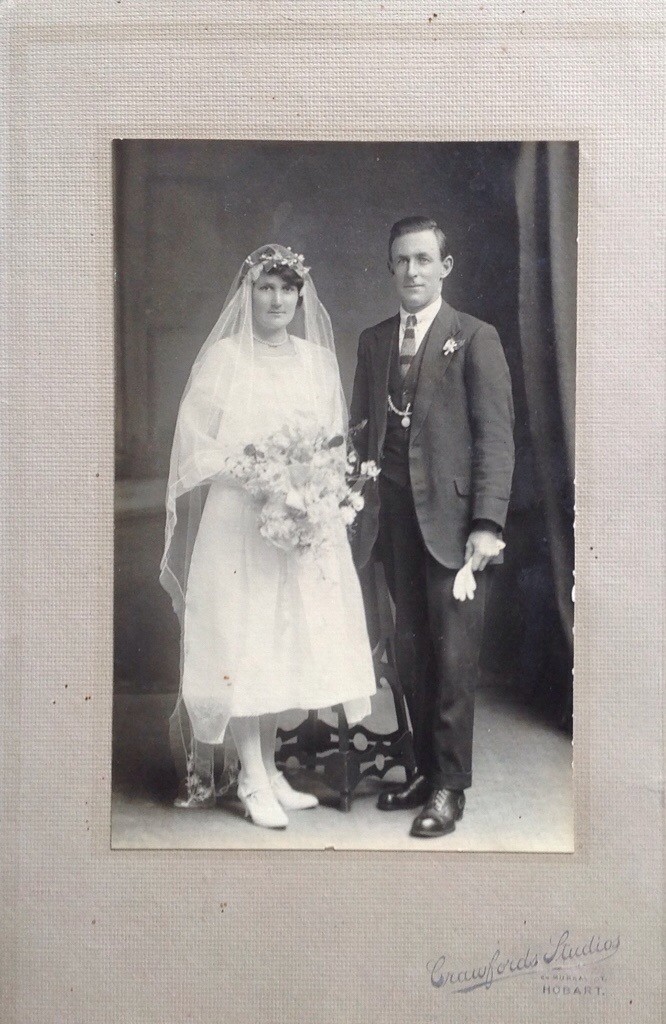A photograph is just one small moment in the life of the family or object. Five minutes before or after and the image would be very different.
So the quiz assessment for this course involves dating photographs. Some research on this topic should help me. Lots of sources are given in the course but here is my summary.
Types of early photographs
- Daguerrotype (began in 1839 until about 1860) can be seen as either a positive or negative image depending upon the angle viewed. Do not expose to light and often found in velvet lined cases.
- Calotype (began in 1841 but rare) meant multiple copies could be made onto paper but images were not as clear as a daguerrotype.
- Ambrotype (began in 1851 until about 1880) is a negative put on a dark background to make a positive looking image. Backing material often paper, lacquer or velvet. With glass cheaper than silver coated copper, ambrotypes quickly took over from daguerrotypes.
Anyone having a photo taken using any of the above formats must have had money as they were fairly expensive.
- Tintype (began in 1853 until about 1930) printed on lacquered iron rather than glass. Generally done in a studio, now becoming less expensive so more people could have their own photos. Often these were like thumbnails we have nowadays in photography.
If you are interested in photography in Australia, here is a link to a timeline from the Art Gallery of NSW. There are also some picture collections from the National Library of Australia including those by Peter Dombrovskis in Tasmania.
I haven’t seen any of these types of photos in my family photo box – they all seem to be from the 1900’s onwards but I am still going to have to look at fashions to date more accurately.
Here are the steps recommended for studying a photo and learning to date it:
- Inscriptions on the photograph
- Identify the photographic process used
- Identify the photographer or studio
- Date by costume
- Date by studio background & props
- Date using other photograph contents (ie. car number plates, cinema signs etc.)
Going to check this out using another photo in my family collection.

Inscriptions on the photo
To Lizzie and Jim with compliments from Harry and Hanna June 16th 1923
Photographic process
Looks like albumen of some sort
Photographer or studio
Bottom right of page is Crawfords Studios, 64 Murray Street, Hobart
Date by costume
Looks like wedding portrait
Date by studio background or props – nil
Other photographic content – nil
Here are some websites to help when looking at fashions.
Photo tree walks you through a case study as well as giving you a gallery of photos to study.
Roger Vaughan personal collection including changing fashions from 1850-1950.
Victoria and Albert Museum goes through decade by decade with changing male and female fashions.
The Australian Dress Register looks more at Aussie styles of clothing. They also include a timeline sorted by type of clothing.
The Australian War Memorial has military uniforms worn by servicemen and women in Australia.
Readers: What fashion traits makes this photo one taken in the early 1920’s?
As this was a similar time to my Mum’s and her siblings wedding, the first thing that dates it in the early 20’s, to my eye, is the wedding boquet, and the ‘odd’ length of her fairly straight type dress. Her shoes, are almost the same as an Aunt married in 1925! Also the bobbed style haircut.
The groom is wearing a narrow style lounge suit with a simple tie. His hair is short at the sides and parted on the side and oiled down.
When did the grooms sit down on a chair for their wedding photos?
Thanks for all the references; I’m quite enjoying dating of the photographs.
My g g grandfather, Thomas Browne, is reported to be the first resident photographer in Hobart Town in the 1840’s – using the Daguerrotype photography.
male, round jacket, their shoes, hairstyles for both, the males watch on chain. The veil. I know bride’s did not always wear white dresses the further back we go.